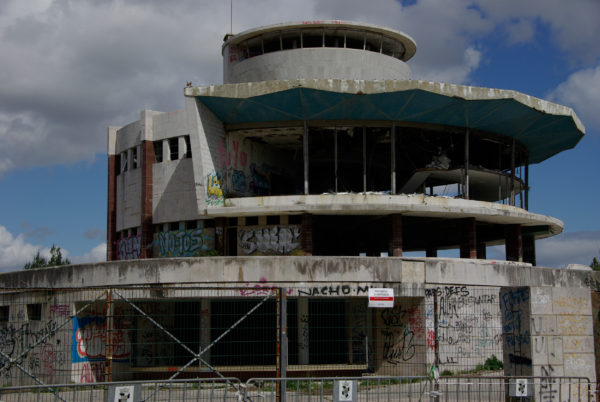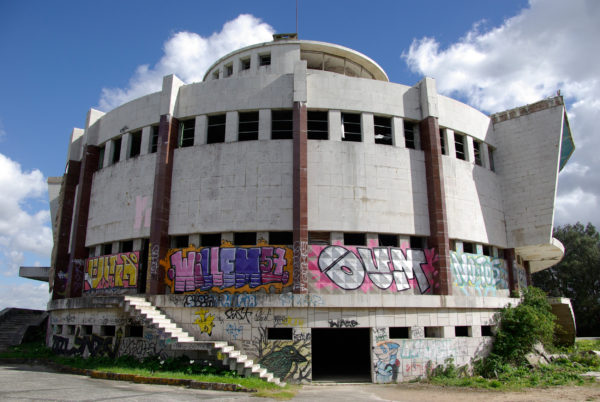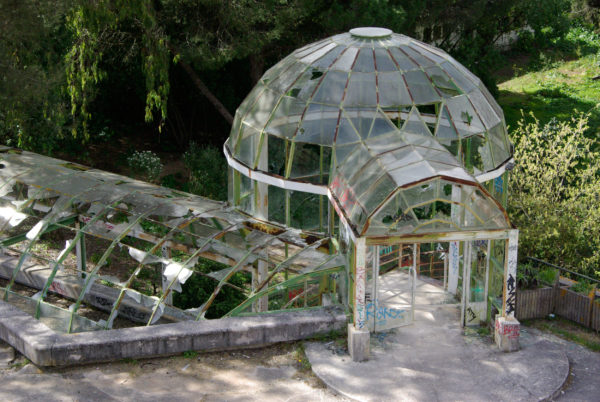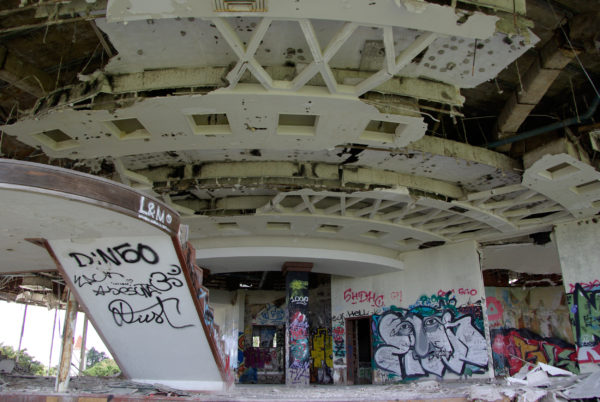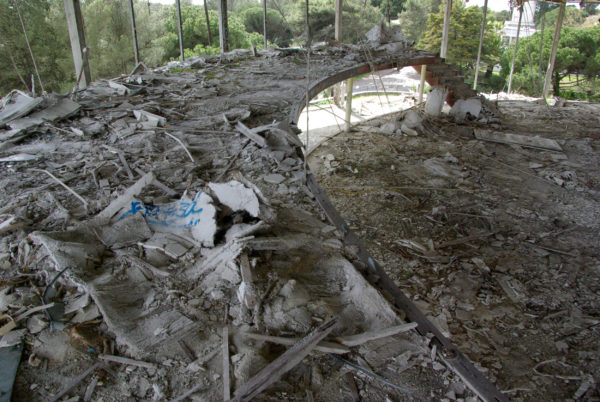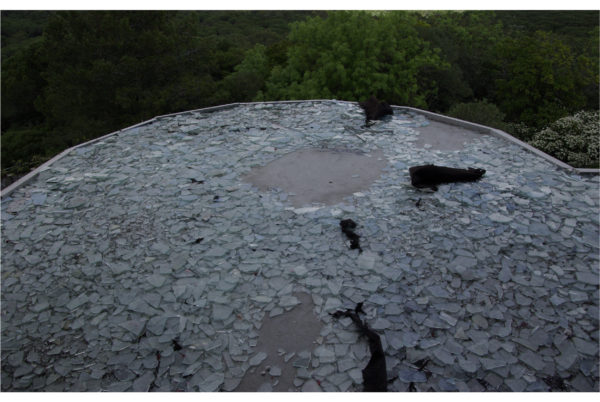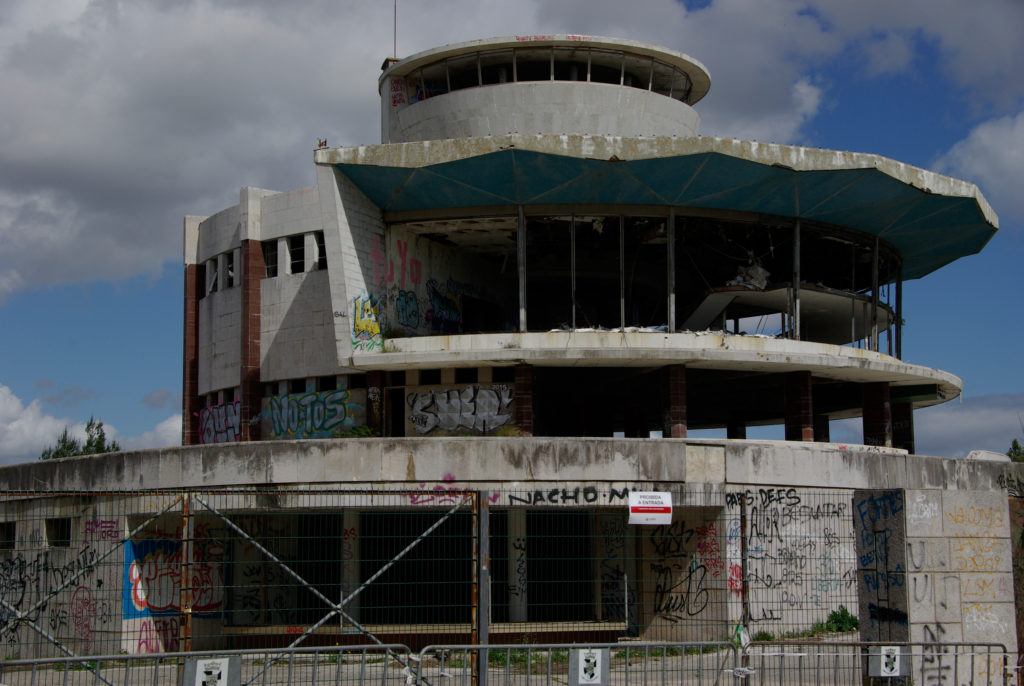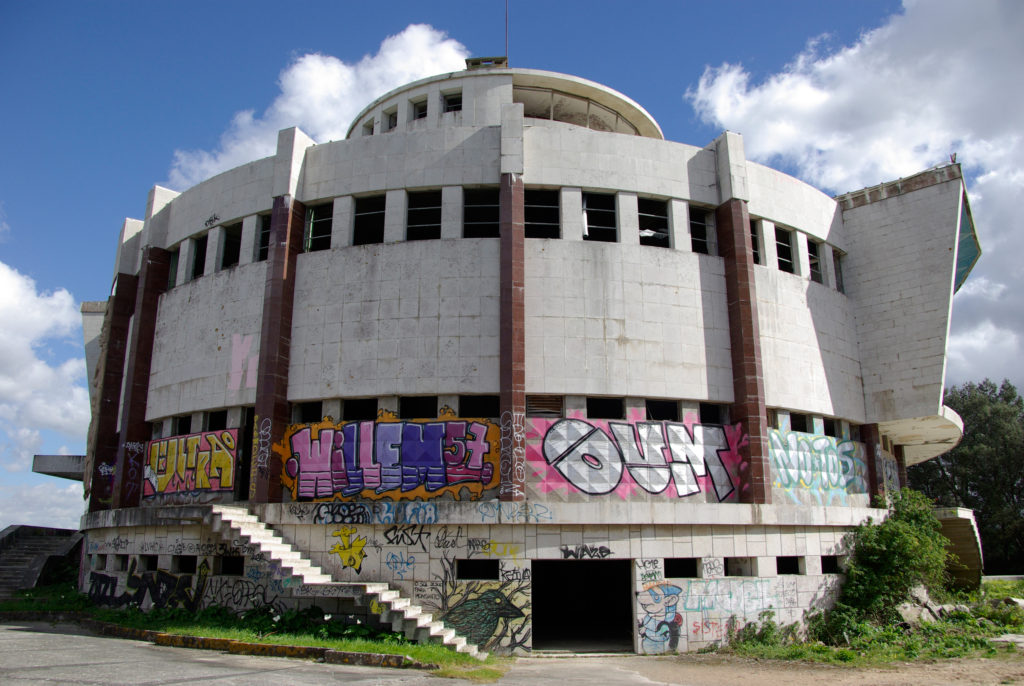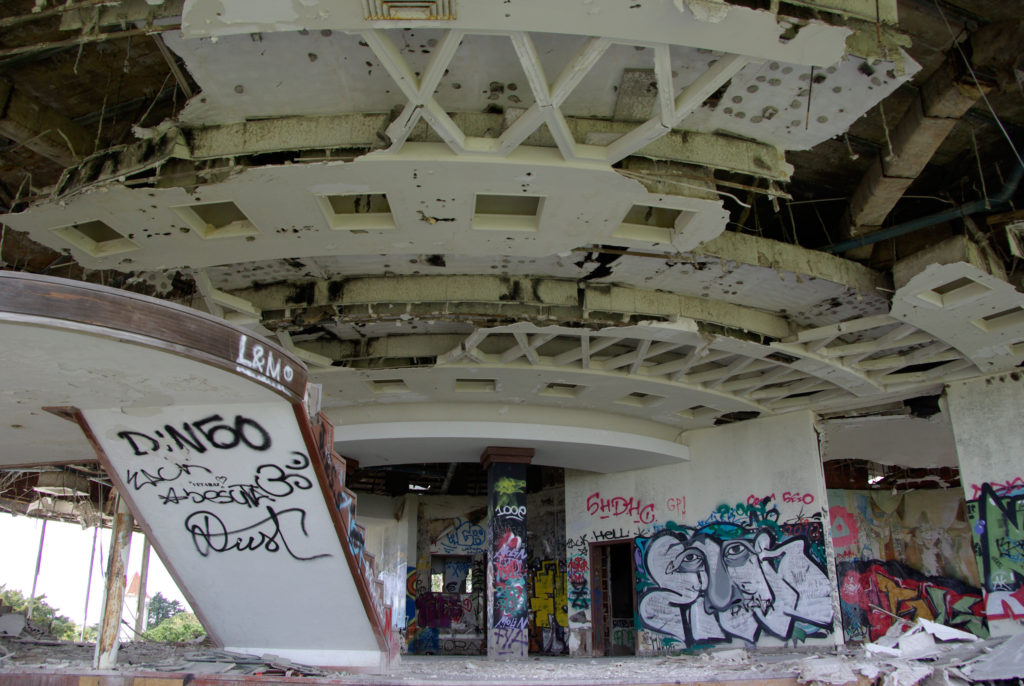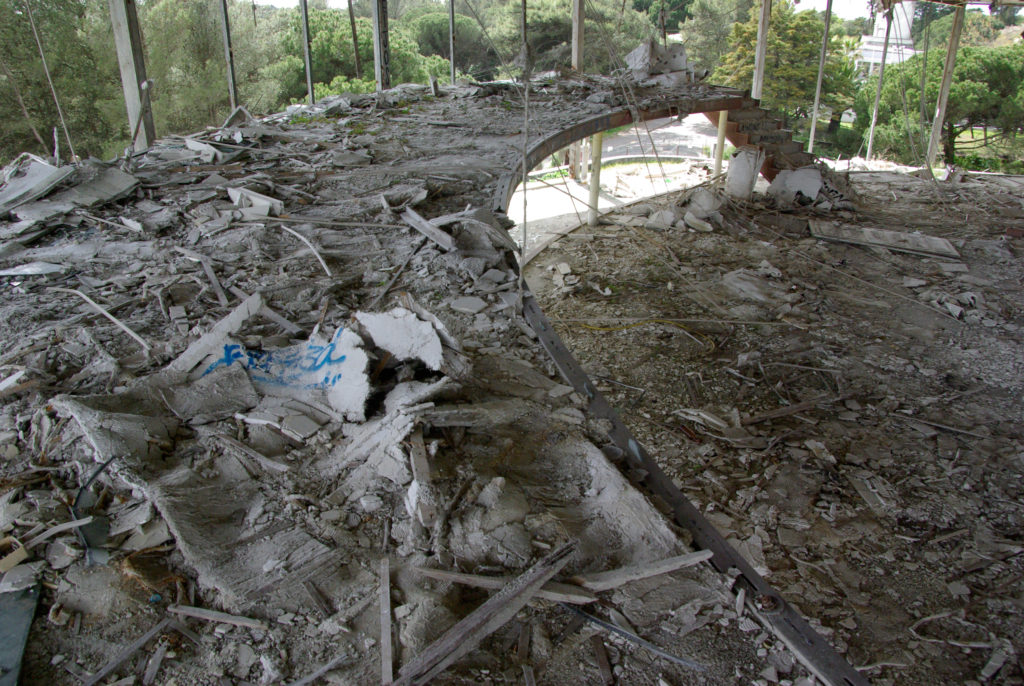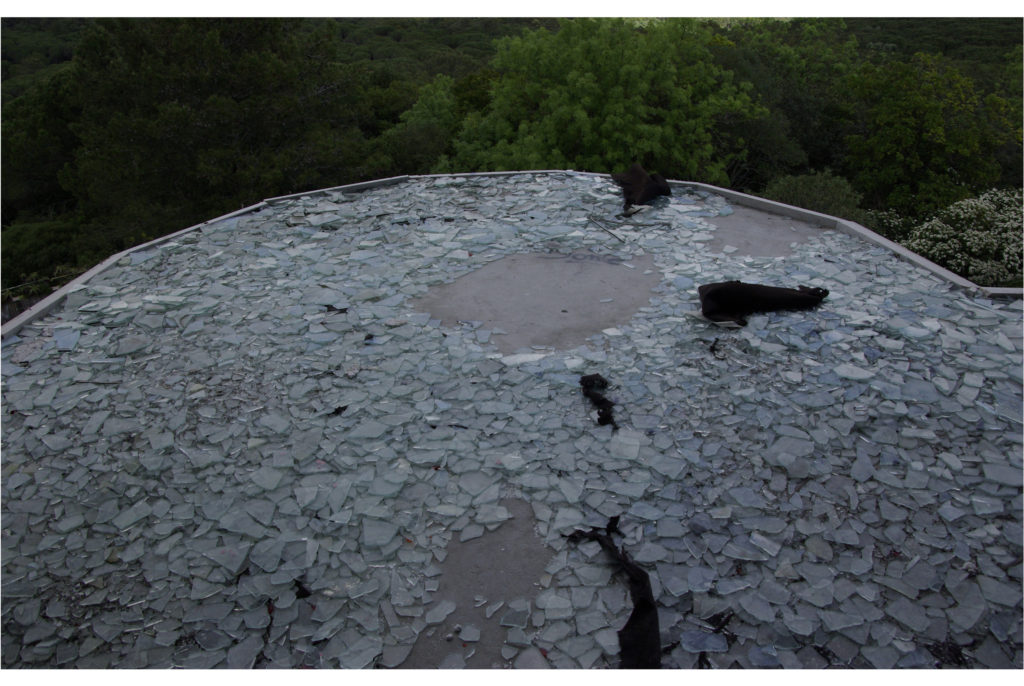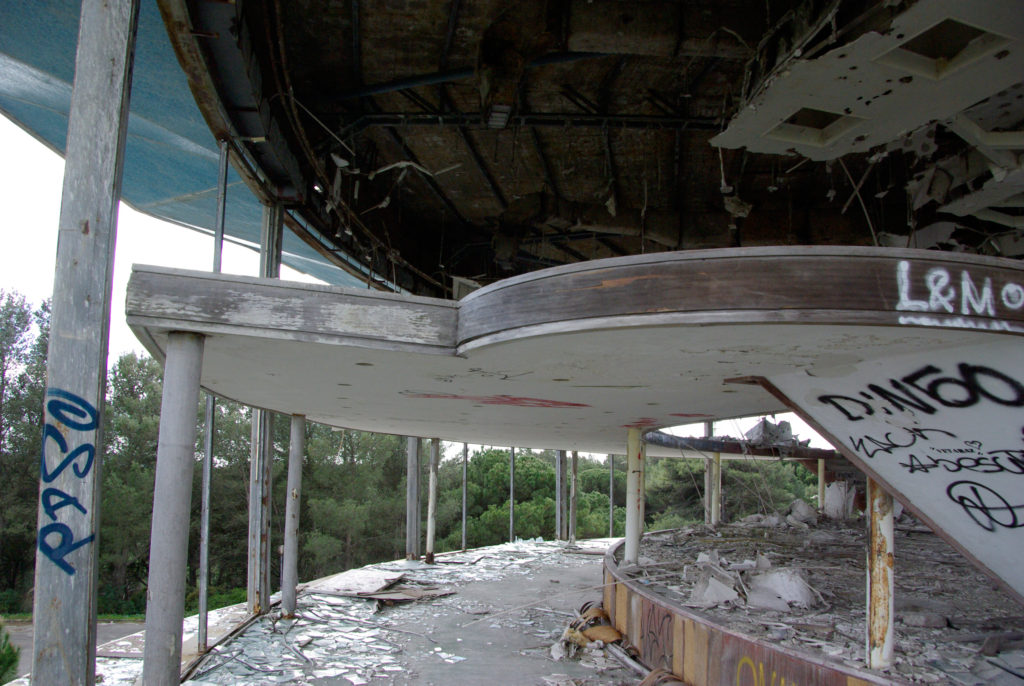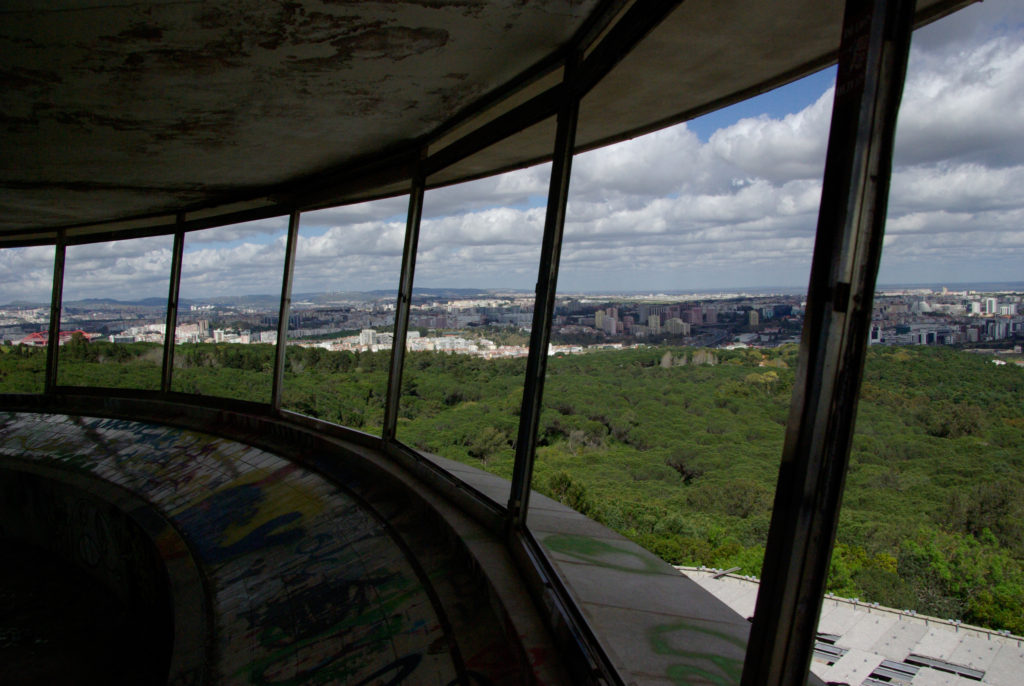Panorâmico was planned as a restaurant for the Portuguese fascist elite and is today in a state of ruin. It’s circular architecture – located on one of the higher points of Lisbon – was designed to reflect the power of surveillance, but at the same time of pleasure. Thinking that the Panorâmico was designed as an exclusive site, inscribing strict socio-geographical delimitations, one can ask in which way did its function mutate with its progressive ruination. Situated on the hill above the urban agglomeration as a point of observation (protected by the artificial forest planted as well during the regime of Salazar), it was also supposed to function as a visual symbol of power – to which one ‘looks up’. It was in fact only sporadically integrated into the urban life and therefore it was constantly changing its functions. It could be seen as a model in real scale.
In the case of the Panorâmico there is always a gap between what it was projected for and its actual material form. My work shows this ruination of a monument as a symbol of power. The images show how an initial architecture takes a secondary form that progressively becomes visible in time. Architecture represents an initial composition, while the ruin shows its decomposition under the influence of the factor ‘time’, developing an own aesthetic of the ruin. Panorâmico represents for me a ruin-museum, like a non-architecture that exhibits something that was not initially planned and happened due to historic and natural processes.
